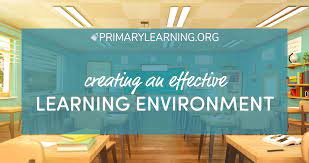Introduction
An effective learning environment is essential for the success of students, teachers, and educational institutions. The right atmosphere can significantly impact the way we acquire new information, retain knowledge, and develop essential skills. This article explores the crucial factors that contribute to creating a productive learning environment.
Physical Layout and Design
One of the critical aspects of an effective learning environment is its physical layout and design. A well-designed space should include comfortable seating, ample space for movement, and access to natural light. The arrangement of furniture should be flexible – allowing for collaboration, group discussions, or individual concentration, as needed.
Materials and Resources
The availability of appropriate materials and resources is also crucial for a successful learning environment. Teachers and students should have easy access to materials like books, computers, reference materials, audio-visual aids, and interactive tools to support learning. Maintaining an organized system for storage and easy retrieval of resources can further enhance productivity.
Integration of Technology
Incorporating technology into the learning environment can enrich teaching methods and student engagement. Interactive whiteboards, projectors, computers, educational software programs are just a few examples of how technology can transform a traditional classroom into an immersive learning atmosphere.
Student-Centered Approach
A student-centered approach involves designing activities that encourage students to take responsibility for their learning process. This method prioritizes individual learning styles, fosters collaboration among peers, emphasizes problem-solving skills and promotes self-directed study. A student-centered environment maximizes the opportunities for each student to achieve their full potential.
Teacher’s Role in Establishing a Positive Atmosphere
The teacher is a vital element in creating a positive learning environment. It begins with developing strong relationships with students through genuine care for their welfare — both personally and academically. Teachers need to establish clear expectations about behavior and academic performance while being open to communication; this solid groundwork helps maintain order and respect in the classroom.
Encouraging Feedback and Reflection
Creating an open environment where students feel comfortable giving and receiving feedback is crucial for learning. Teachers should also encourage students to reflect on their learning experiences – what worked, what didn’t, and areas for improvement. Such reflection will help them understand their strengths while also identifying opportunities for growth.
The Importance of a Supportive School Culture
A supportive school culture plays a significant role in establishing an effective learning environment. Schools should provide resources that assist teachers in creating a better learning experience for their students, such as professional development opportunities and collaboration with colleagues. Likewise, fostering a spirit of community among faculty, staff, students, and parents contributes to happier, more engaged learners.
Conclusion
An effective learning environment is the key to student success. It encompasses various aspects such as the physical layout of the classroom, the availability of resources and materials, the integration of technology, student-centered instruction techniques, teachers’ role in creating a positive atmosphere, feedback mechanisms, and a supportive school culture. By putting these components into practice, educators can help shape well-rounded individuals ready to face future challenges confidently.





